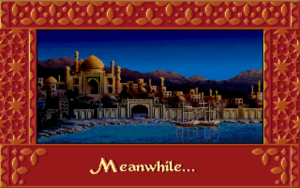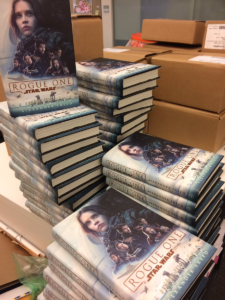I’ve been exceedingly busy for a long while now, but I haven’t been able to talk about most of the work I’ve been doing.
In 2019, that changes. Here’s what I’ve got coming:
Continue reading
I’ve been exceedingly busy for a long while now, but I haven’t been able to talk about most of the work I’ve been doing.
In 2019, that changes. Here’s what I’ve got coming:
Continue reading It’s been a while since your game’s scheming villain has actually shown up. There’s a good reason for that–you know the player will try to kill her as soon as she appears, and there’s only so many times you can place her beyond a uncrossable chasm or behind a force field. But you still want to remind the player she exists and show her behind-the-scenes plotting.
It’s been a while since your game’s scheming villain has actually shown up. There’s a good reason for that–you know the player will try to kill her as soon as she appears, and there’s only so many times you can place her beyond a uncrossable chasm or behind a force field. But you still want to remind the player she exists and show her behind-the-scenes plotting.
Or maybe your game adaptation of the Odyssey needs some Penelope scenes to reinforce that, yes–Penelope is pretty awesome and worth fighting monsters and gods to return to. You want to show how she’s handling her own troubles back home to inspire the player.
Or maybe you want to show Sidekick Guy getting murdered back at the base while the player is out on a mission. Or maybe you want to show the Great Dragon slowly awakening beneath the earth. Or maybe…
…well, you get the point. You want to switch away from the player’s point of view and use a cutscene to provide information or atmosphere you couldn’t otherwise get across. In a film, you wouldn’t think twice about it.
Here’s my advice: Think twice. That’s not to say you shouldn’t switch viewpoints for a cutscene in a video game. The advantages are obvious (and pretty much the same as they are in traditional, non-interactive media–thus, not worth discussing in great detail here) but there’s a lot to consider before you jump in. Continue reading
 Has it really been that long since I last posted on the blog? Let’s see if I can crank out some new game writing articles soon; as always, suggestions on subject matter are welcome.
Has it really been that long since I last posted on the blog? Let’s see if I can crank out some new game writing articles soon; as always, suggestions on subject matter are welcome.
The good news is, I’ve been keeping busy–I’ve worked on several upcoming games since that last post, and as of today released my second novel: Rogue One: A Star Wars Story. It’s the prose adaptation of the film, chock full of new and expanded scenes.
At some point I’ll probably write a bit about the process of adapting a film script into prose–it was a fascinating challenge, turning a fast-moving spectacle into a novel-length interior piece, and examining how to play to the strengths of any given medium is always an interest of mine. For the moment, though, this announcement will have to suffice. (I’ll likely update the Bibliography entry once some reviews come in.)
Here’s where it gets complicated. Or… well, more so.
This post is a companion to Writing Romance in (non-Romance Games): Linear Romances. You’ll find a number of assumptions about our overall topic outlined there; they still hold true, and I encourage folks to start with that post before jumping into this one. Here, we’ll cover three overall subjects: branching romance fundamentals, linear techniques in branching games (where we’ll revisit some of the approaches discussed in the previous post), and “casting” a variety of romantic interests in a branching game. Continue reading
Ah, romance.
Compelling romance subplots are tough to write at the best of times. Consider their place in linear media–how many otherwise strong films or novels suffer from an unconvincing, uncompelling, or tacked-on romantic element? Add in the complexities of interactive narrative and of course things often go badly.
But that’s no reason to eschew romantic storylines altogether. No one needs convincing that there’s a rich vein of material to be mined here. So what should we think about as game writers when we introduce romantic elements into our projects? What are the pitfalls to avoid and the game-specific challenges that need to be overcome? Continue reading